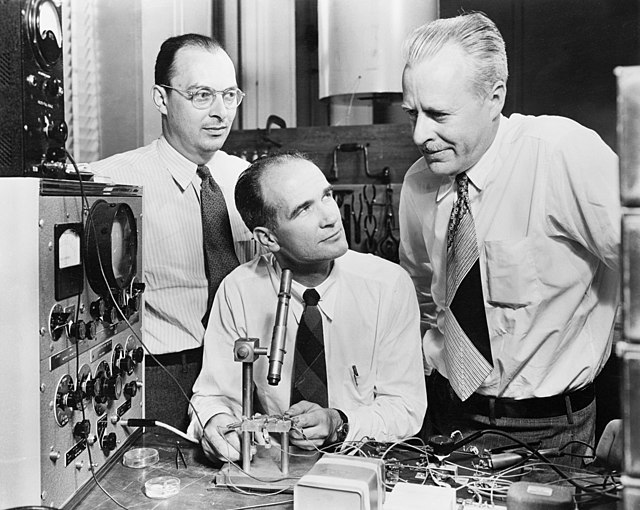In physics, the Bardeen–Cooper–Schrieffer (BCS) theory is the first microscopic theory of superconductivity since Heike Kamerlingh Onnes's 1911 discovery. The theory describes superconductivity as a microscopic effect caused by a condensation of Cooper pairs. The theory is also used in nuclear physics to describe the pairing interaction between nucleons in an atomic nucleus.
A commemorative plaque placed in the Bardeen Engineering Quad at the University of Illinois at Urbana-Champaign. It commemorates the Theory of Superconductivity developed here by John Bardeen and his students, for which they won a Nobel Prize for Physics in 1972.
John Bardeen was an American physicist and electrical engineer. He is the only person to be awarded the Nobel Prize in Physics twice: first in 1956 with William Shockley and Walter Brattain for the invention of the transistor; and again in 1972 with Leon N. Cooper and John Robert Schrieffer for a fundamental theory of conventional superconductivity known as the BCS theory.
Bardeen in 1956
John Bardeen, William Shockley and Walter Brattain at Bell Labs, 1948
A stylized replica of the first transistor invented at Bell Labs on December 23, 1947
A commemorative plaque remembering John Bardeen and the theory of superconductivity, at the University of Illinois at Urbana–Champaign




